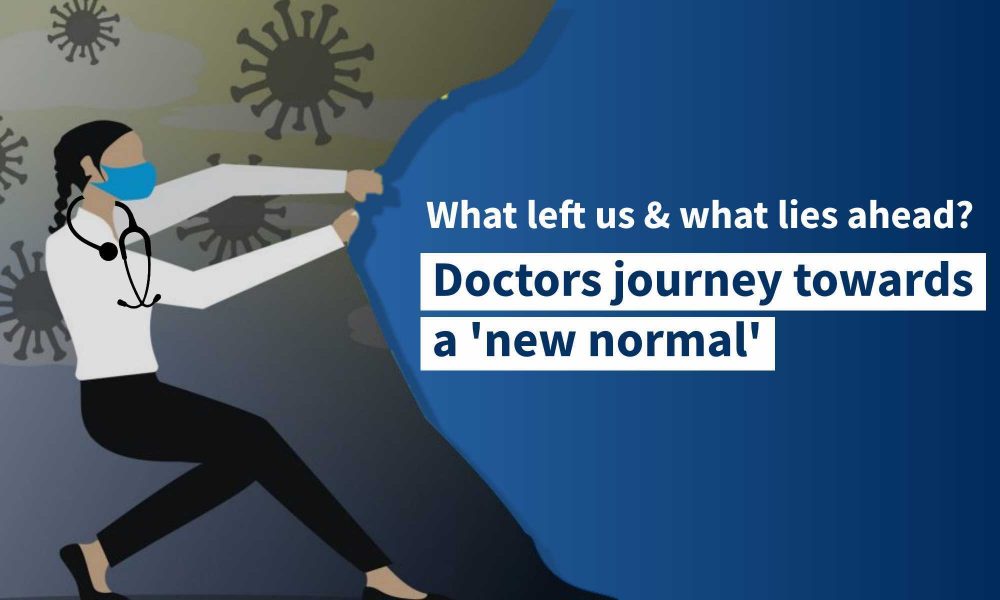
The emergence of the pandemic changed the course of doctors’ lives a couple of years ago. Over the last two-three years, we have seen it all, we’ve faced struggles, never-ending duties, sleepless nights, mental & physical health problems, and we even stood helpless at times.
But, we never gave up! We took lessons from the pandemic, we learned to adapt, we changed our patterns and made sure that we deliver the best possible care to our patients. As we move forward, we will encounter a road that looks much different from the paths we have covered so far.
We have slowly moved on from the pandemic – at least in our own minds – so things are certainly not the same. We are entering a ‘new normal’. We don’t know what it has to offer, but we know one thing for sure – Healthcare after the pandemic would not be the same as before.
So what’s changed? And what remains unchanged? There could be quite a lot of questions & concerns about the changes that are happening around. To put the pieces together, we conducted a survey among doctors from across the country via the DailyRounds & M3 India platform. And yes, we have some interesting findings! This data clearly illustrates the impact of the pandemic on doctors. Let’s look into it in detail.
This comprehensive survey was conducted among 250+ doctors across multiple specialties. The respondents include doctors whose professional experience ranges from less than 5 years to more than 20 years. More importantly, 96% of the survey respondents were practising (either in-clinic or online consultation) during the course of the peak pandemic.
The changing footfalls
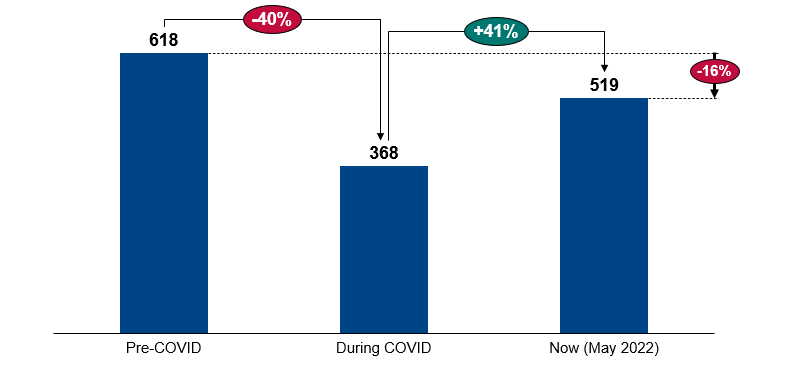
The patient footfall in hospitals was largely affected by the pandemic. According to the survey results, there has been a 40% drop in the average patient load during the Covid times when compared to the pre-covid days. However, with ease in covid protocols and a drop in pandemic cases the patients are slowly starting to visit the hospitals/clinics again. On average, the doctors saw 41% more patients in the last one month when compared to the peak covid days. Despite that, the average patient load for a month is still 16% lower than before the pandemic.
Changing modes of consultation
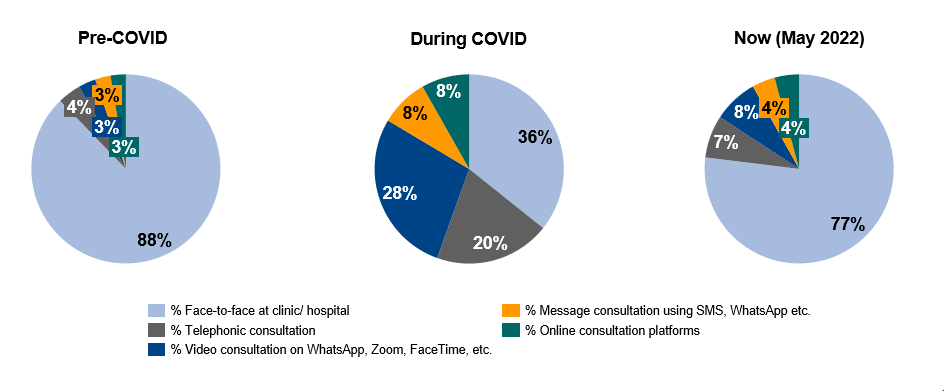
These days, a patient consultation is no longer confined to a traditional consultation room. The pandemic opened up new channels for virtual consultation such as video, telephone, and message (SMS, WhatsApp, etc) consultations alongside third-party apps. During the pandemic days, face-to-face communications declined sharply, with video and telephonic consultations taking over.
However, the share of face-to-face consultations has almost caught up with the pre-covid trends in the past one month. Despite the fact that the numbers lag behind pre-covid trends, it shows that patients are slowly gaining the confidence to visit doctors in hospital settings again.
Over the past month, virtual modes of consultation have almost doubled as compared to pre-covid days. The numbers certainly indicate that Covid has now brought a shift in doctors being more open and accepting of virtual/telephonic modes of consultations. One-third of doctors surveyed said that 25-49% of their patients’ follow-up consultations can be delivered virtually rather than face to face over the next two years.
The way we interact with pharma agents
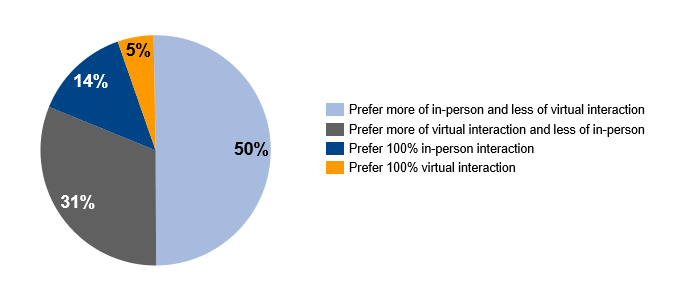
Things aren’t different when it comes to engaging with medical representatives either. The survey shows that about 81% of doctors now prefer a mix of in-person and virtual interaction with the pharma agents.
The influence on our behaviours
The pandemic also marked some behavioural changes among the doctors. As many as 41% of doctors claimed that the covid-related protocols, such as wearing masks during practice and frequent use of sanitizers, are less observed by medical staff nowadays when compared to the peak pandemic times. This certainly is a matter of concern considering that the pandemic and its effects on people are far from over.
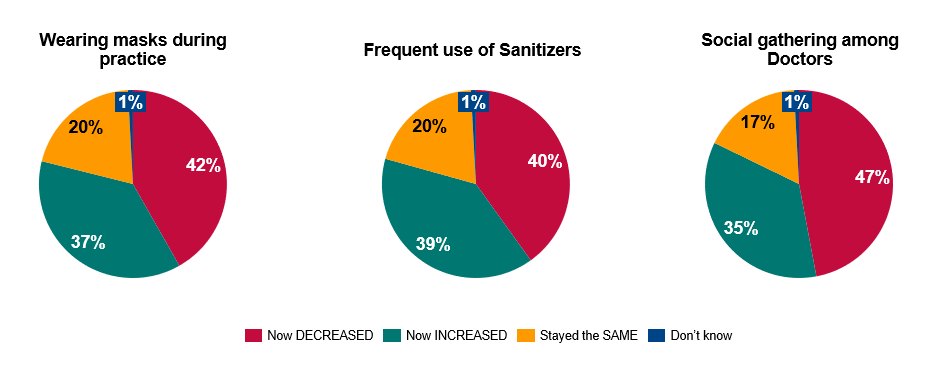
Catching up with the peers over a cup of coffee in the hospital canteen, and discussing clinical cases and procedures were part of the daily routine for most of the doctors a couple of years back. However, 47% of the respondents stated that social gatherings among doctors continue to be less frequent ever since the pandemic.
The impact on how we learn
The pandemic has made the biggest impact on how people learn with the introduction of new modes of teaching and learning. Its traces can be found in Continuous Medical Education as well. However, their effectiveness is certainly questioned by the responders in the survey.
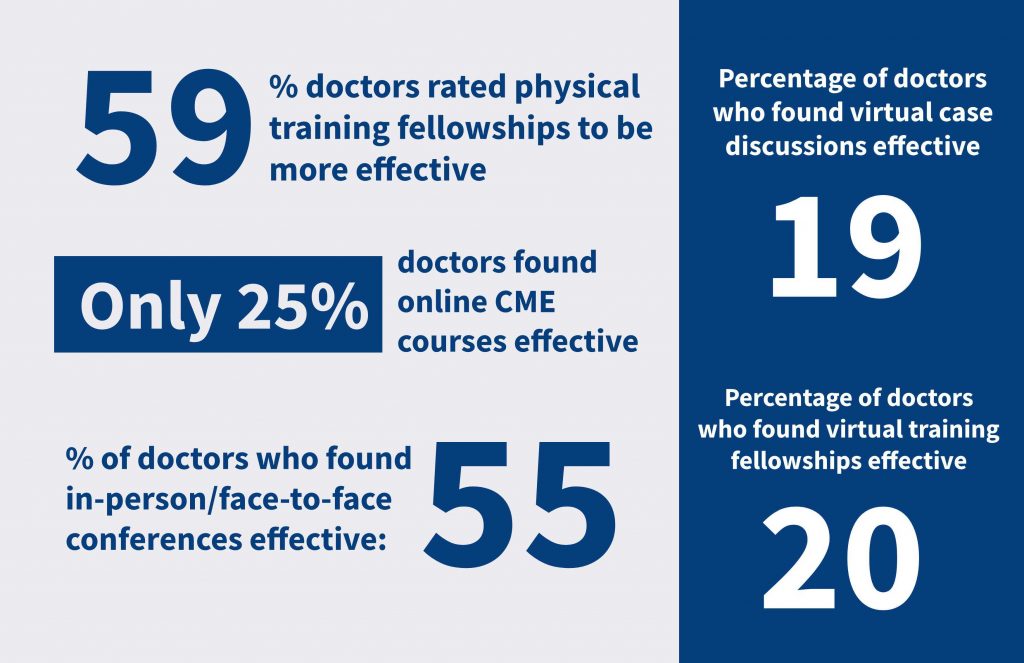
As many as 59% of doctors rated physical training fellowships to be the most effective learning tool as compared to 19% who rated in favour of virtual fellowships. Similarly, 55% of medicos ranked in-person or face-to-face conferences to be more effective for continuing medical education.
When it comes to CME, physical gatherings in groups ranked higher in effectiveness compared to online CMEs. Out of which, 43% of doctors ranked small group CME gatherings to be more effective for learning, while 34% considered larger group CMEs as effective.
In addition to this, classroom case discussions ranked better as learning tools over virtual case discussions. This number clearly suggests that medicos prefer all forms of physical or in-person learning set up for continuing medical education over the virtual alternatives that picked up during the peak of the pandemic.
The impact on our prescribing decisions
A whopping 77% of doctors have made changes in their prescribing practices ever since the arrival of the pandemic, according to the survey. 1 in 2 doctors is now considering the availability of medicines before prescribing them to the patients. Also, 45% of the doctors continue to write prescriptions for longer durations since the pandemic, perhaps keeping in mind the supply chain issues and uncertainty brought about by the pandemic.
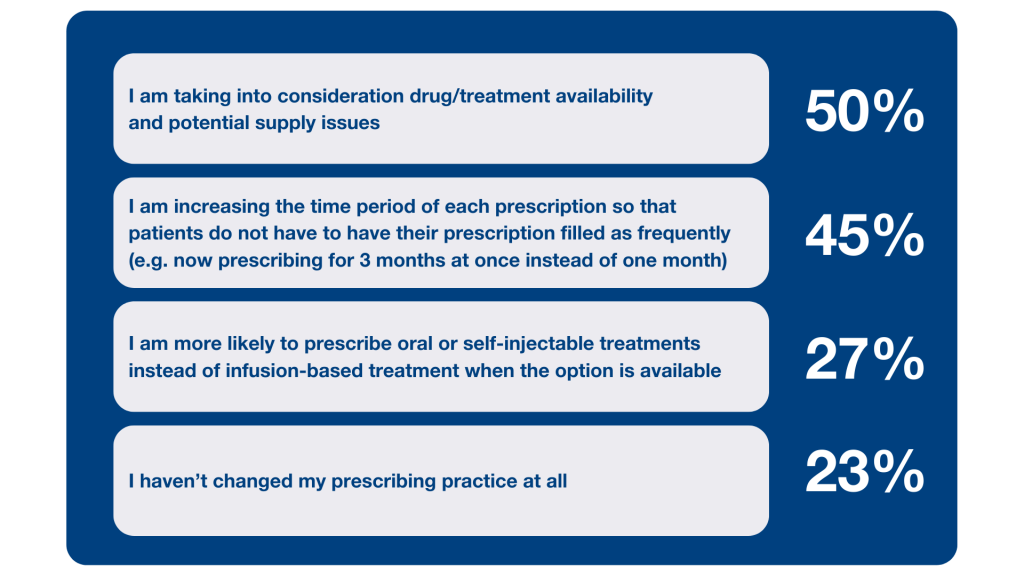
Also, almost 1 out of 3 doctors are more likely to prescribe oral or self-injectable treatments over infusion-based treatment if given a choice. This helps to control the patient footfall and crowd in hospitals to a certain extent.
What does the ‘new normal’ offer?
As said earlier, the ‘new normal’ comes with uncertainty written all over it. Nonetheless, our survey respondents provide their perspectives on what is happening now and what will be happening soon. Their agreements have been rated from 0 – strongly disagree to 10 – strongly agree.
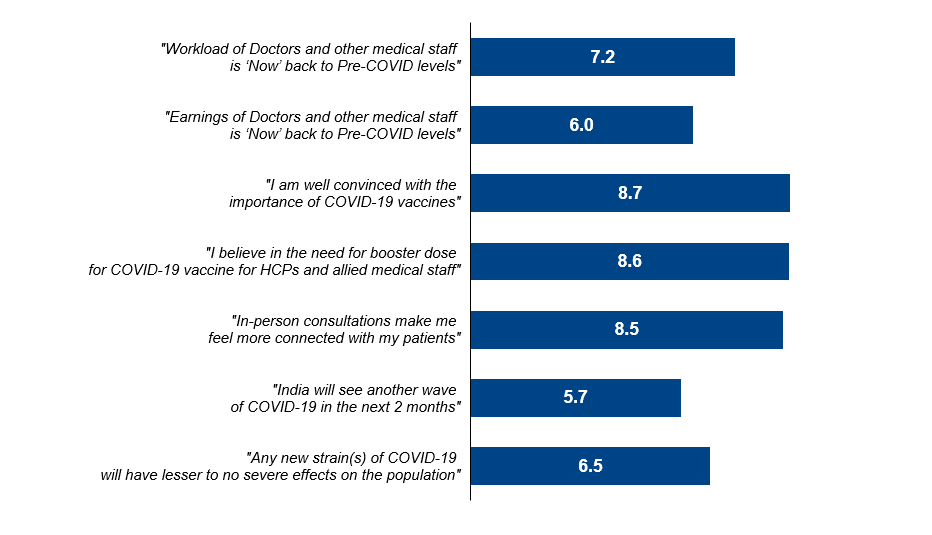
How happy are we with what we are doing?
‘Happy Doctors Day’ they say! But, are we really happy with how things are going in our current practice? In the world of medicine, the happiness index may not be a familiar metric. It is often easy to forget what it takes to be happy amid our hectic work schedules and never-ending responsibilities.
Therefore, we surveyed our respondents about how happy they are in their current roles. As expected, almost 2 out of 3 doctors were either unhappy or just okay with how things were going for them.
So before we wish you a happy doctor’s day, here’s a gentle reminder to spend some time for yourself and find happiness in whatever you do. So that we could really mean it when we say…
A HAPPY DOCTOR’S DAY 💙
Also Read: The Plan B (School) after MBBS: A guide to pursue MBA after MBBS